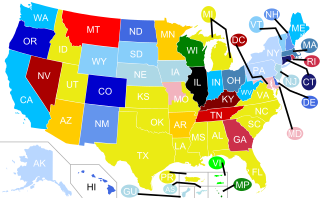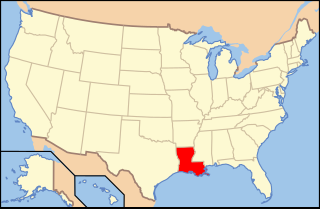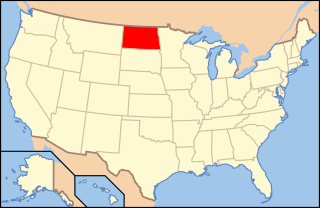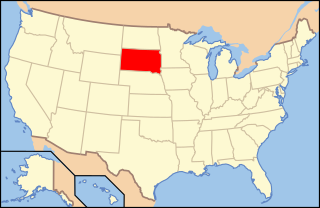Bowers v. Hardwick, 478 U.S. 186 (1986), was a landmark decision of the U.S. Supreme Court that upheld, in a 5–4 ruling, the constitutionality of a Georgia sodomy law criminalizing oral and anal sex in private between consenting adults, in this case with respect to homosexual sodomy, though the law did not differentiate between homosexual and heterosexual sodomy. It was overturned in Lawrence v. Texas (2003), though the statute had already been struck down by the Georgia Supreme Court in 1998.

The United States has inherited sodomy laws which constitutionally outlawed a variety of sexual acts that are deemed to be illegal, illicit, unlawful, unnatural and/or immoral from the colonial-era based laws in the 17th century. While they often targeted sexual acts between persons of the same sex, many sodomy-related statutes employed definitions broad enough to outlaw certain sexual acts between persons of different sexes, in some cases even including acts between married persons.
Gregg v. Georgia, Proffitt v. Florida, Jurek v. Texas, Woodson v. North Carolina, and Roberts v. Louisiana, 428 U.S. 153 (1976), is a landmark decision of the U.S. Supreme Court. It reaffirmed the Court's acceptance of the use of the death penalty in the United States, upholding, in particular, the death sentence imposed on Troy Leon Gregg. The set of cases is referred to by a leading scholar as the July 2 Cases, and elsewhere referred to by the lead case Gregg. The court set forth the two main features that capital sentencing procedures must employ in order to comply with the Eighth Amendment ban on "cruel and unusual punishments". The decision essentially ended the de facto moratorium on the death penalty imposed by the Court in its 1972 decision in Furman v. Georgia 408 U.S. 238 (1972). Justice Brennan dissent famously argued that "The calculated killing of a human being by the State involves, by its very nature, a denial of the executed person's humanity... An executed person has indeed 'lost the right to have rights."
Robinson v. California, 370 U.S. 660 (1962), is the first landmark decision of the United States Supreme Court in which the Eighth Amendment of the Constitution was interpreted to prohibit criminalization of particular acts or conduct, as contrasted with prohibiting the use of a particular form of punishment for a crime. In Robinson, the Court struck down a California law that criminalized being addicted to narcotics.
Solem v. Helm, 463 U.S. 277 (1983), was a United States Supreme Court case concerned with the scope of the Eighth Amendment protection from cruel and unusual punishment. Mr. Helm, who had written a check from a fictitious account and had reached his seventh nonviolent felony conviction since 1964, received a mandatory sentence, under South Dakota law at that time, to life in prison with no parole. Petitioner Mr. Solem was the warden of the South Dakota State Penitentiary at the time.
In American constitutional law, a statute is void for vagueness and unenforceable if it is too vague for the average citizen to understand. This is because constitutionally permissible activity may not be chilled because of a statute's vagueness. There are several reasons a statute may be considered vague; in general, a statute might be void for vagueness when an average citizen cannot generally determine what persons are regulated, what conduct is prohibited, or what punishment may be imposed. For example, criminal laws which do not state explicitly and definitely what conduct is punishable are void for vagueness. A statute is also void for vagueness if a legislature's delegation of authority to judges or administrators is so extensive that it could lead to arbitrary prosecutions. A law can also be "void for vagueness" if it imposes on First Amendment freedom of speech, assembly, or religion.
The crime against nature or unnatural act has historically been a legal term in English-speaking states identifying forms of sexual behavior not considered natural or decent and are legally punishable offenses. Sexual practices that have historically been considered to be "crimes against nature" include masturbation, sodomy and bestiality.
John Webb was an American jurist who served as an associate justice of the North Carolina Supreme Court (1986–1998). Prior to serving on North Carolina's highest court, Justice Webb had been a Superior Court (trial) judge and a judge of the North Carolina Court of Appeals.
Taylor v. United States, 495 U.S. 575 (1990), was a U.S. Supreme Court decision that filled in an important gap in the federal criminal law of sentencing. The federal criminal code does not contain a definition of many crimes, including burglary, the crime at issue in this case. Yet sentencing enhancements applicable to federal crimes allow for the enhancement of a defendant's sentence if he has been convicted of prior felonies. The Court addressed in this case how "burglary" should be defined for purposes of such sentencing enhancements when the federal criminal code contained no definition of "burglary." The approach the Court adopted in this case has guided the lower federal courts in interpreting other provisions of the criminal code that also refer to generic crimes not otherwise defined in federal law.
Rose v. Locke, 423 U.S. 48 (1975), was a United States Supreme Court case in which a Tennessee statute proscribing "crime against nature" was held not unconstitutionally vague as applied to cunnilingus, satisfying as it does the due process standard of giving sufficient warning that men may so conduct themselves as to avoid that which is forbidden. Viewed against that standard, the challenged statutory phrase is no vaguer than many other terms describing criminal offenses at common law, which are now codified in criminal codes. Moreover, the Tennessee Supreme Court by previously rejecting claims that the statute was to be narrowly applied has given sufficiently clear notice that it would be held applicable to acts such as those involved here when such a case as this arose.

National Coalition for Gay and Lesbian Equality and Another v Minister of Justice and Others is a decision of the Constitutional Court of South Africa which struck down the laws prohibiting consensual sexual activities between men. Basing its decision on the Bill of Rights in the Constitution – and in particular its explicit prohibition of discrimination based on sexual orientation – the court unanimously ruled that the crime of sodomy, as well as various other related provisions of the criminal law, were unconstitutional and therefore invalid.

A sodomy law is a law that defines certain sexual acts as crimes. The precise sexual acts meant by the term sodomy are rarely spelled out in the law, but are typically understood and defined by many courts and jurisdictions to include any or all forms of sexual acts that are deemed to be "illegal", "illicit", "unlawful", "unnatural" and/or "immoral". Sodomy typically includes anal sex, oral sex, manual sex, and bestiality. In practice, sodomy laws have rarely been enforced to target against sexual activities between individuals of the opposite sex, and have mostly been used to target against sexual activities between individuals of the same sex.

Lesbian, gay, bisexual, and transgender (LGBT) persons in the U.S. state of Louisiana may face some legal challenges not experienced by non-LGBT residents. Same-sex sexual activity is legal in Louisiana as a result of the US Supreme Court decision in Lawrence v. Texas. Same-sex marriage has been recognized in the state since June 2015 as a result of the Supreme Court's decision in Obergefell v. Hodges.
The Portland vice scandal refers to the discovery in November 1912 of a gay male subculture in the U.S. city of Portland, Oregon. Nearly 70 men were charged, and three were convicted by jury; the Oregon Supreme Court then reversed the convictions on legal technicalities.

Lesbian, gay, bisexual, and transgender (LGBT) people in the U.S. state of Indiana enjoy most of the same rights as non-LGBT people. Same-sex marriage has been legal in Indiana since October 6, 2014, when the U.S. Supreme Court refused to consider an appeal in the case of Baskin v. Bogan.

Lesbian, gay, bisexual, and transgender (LGBT) persons in the U.S. state of North Dakota may face some legal challenges not experienced by non-LGBT residents. Same-sex sexual activity is legal in North Dakota, and same-sex couples and families headed by same-sex couples are eligible for all of the protections available to opposite-sex married couples; same-sex marriage has been legal since June 2015 as a result of Obergefell v. Hodges. State statutes do not address discrimination on account of sexual orientation or gender identity; however, the U.S. Supreme Court's ruling in Bostock v. Clayton County established that employment discrimination against LGBT people is illegal under federal law.

Lesbian, gay, bisexual, and transgender (LGBT) people in the U.S. state of South Dakota may face some legal challenges not experienced by non-LGBT residents. Same-sex sexual activity is legal in South Dakota, and same-sex marriages have been recognized since June 2015 as a result of Obergefell v. Hodges. State statutes do not address discrimination on account of sexual orientation or gender identity; however, the U.S. Supreme Court's ruling in Bostock v. Clayton County established that employment discrimination against LGBT people is illegal under federal law.

Lesbian, gay, bisexual, and transgender (LGBT) persons in the U.S. state of Nebraska may face some legal challenges not experienced by non-LGBT residents. Same-sex sexual activity is legal in Nebraska, and same-sex marriage has been recognized since June 2015 as a result of Obergefell v. Hodges. The state prohibits discrimination on account of sexual orientation and gender identity in employment and housing following the U.S. Supreme Court's ruling in Bostock v. Clayton County and a subsequent decision of the Nebraska Equal Opportunity Commission. In addition, the state's largest city, Omaha, has enacted protections in public accommodations.

Franklin v. State, 257 So. 2d 21, was a case in which the Florida Supreme Court struck down Florida's sodomy law as being "unconstitutional for vagueness and uncertainty in its language, violating constitutional due process to the defendants." The court retained the state's prohibition on sodomy by ruling that anal and oral sex could still be prosecuted under the lesser charge of "unnatural and lascivious" conduct, thus reducing the crime from a felony to a misdemeanor.
The history of LGBT residents in South Dakota spans back to precolonial Native American times, but has become much more visible in the 21st century.









